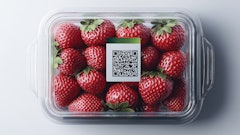New research shows that annual UK household food waste has fallen by 1.1 million tons (13 percent) over a three year period from 8.3 million tons to an estimated 7.2 million tons.
Estimates of household food waste across the UK were last updated in 2009 (8.3 million tons annually; referring to levels in 2006/7). This established a UK baseline against which progress could be measured.
WRAP commissioned Resource Futures to determine an updated estimate for local authority collected household food waste, based on the most recent compositional studies and WasteDataFlow data, and to estimate the change since 2006/7. WRAP has used this as a basis for updating the estimate for the overall levels of household food waste in the UK. The approach taken and the new estimates have been peer reviewed, and updated in the light of these comments.
The reduction in annual UK household food waste between 2006/7 and 2010 was around 1.1 million tons, or around 13 percent. The new estimate is 7.2 million tons annually, or equivalent to around a fifth of all food purchased.
Avoidable household food waste (i.e. food that could have been eaten) has reduced by 950,000 tons, or 18 percent, from 5.3 to 4.4 million tons annually.
As food inflation over this period has been around 20 percent, although the amount we throw away is much lower (overall 4.4 mt vs 5.3 mt), it is still costing us about the same (ca. £12 billion). Had the reduction in food waste not occurred, consumers would have been spending at least £2.5 billion a year more on food bought and thrown away.
The environmental impact of avoidable household food waste is now around 17 million tons of CO2e (equivalent to the emissions of 1 in 5 cars on UK roads) and 4 percent of the UK total water footprint. The savings associated with the reduction in avoidable food waste amount to around 3.6 million tons of CO2e a year, and almost a billion liters of water a year.
The reduction is a huge achievement. However, household food waste remains the single largest proportion of UK food waste arisings (almost 50 percent), and more than 60 percent of this is avoidable – so there remains much more to do.
According to Wrap.org, the reduction is due to:
- Rising food prices and reduced disposable incomes being triggers for many consumers to see how they could save money.
- The work of WRAP's Love Food Hate Waste initiative, which is supported by Local Authorities and other partners and community groups, gives consumers the practical advice, tools and, importantly, confidence to realize these savings. This activity is also supported by signatories of the Courtauld Commitment voluntary agreement. And they are also making it easier for consumers in the retail environment to buy the right amounts of food and drink and to get the most from what they buy. For example through optimizing pack sizes, clearer date labeling and storage guidance, maximizing shelf life and innovative packaging.















